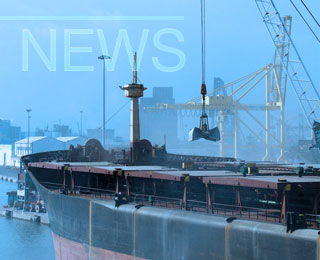Contrary to last week when all dry bulk markets were on their way up, rates have experienced a rather severe correction especially since the middle of the week. With a lack of activity in the Atlantic, the Capesize market was the first to take a dive back to levels last seen at the end of last year. It was followed soon by the Panamax but to a lesser extent, thanks to some business coming from the ECSA. Handymaxes so far have not been much affected by this downturn and rates have only suffered from marginal losses.

A quiet week overall in the Panamax sector, which saw rates hesitate in the Atlantic and soften in the Pacific and Indian Ocean. A small build-up of tonnage in the Pacific meant that the spot rates were forced downwards which in turn put pressure on tonnage in the Indian Ocean. The outlook was a bit more optimistic towards the end of the week with a lot of the spot tonnage fixed and the expectation of more cargoes entering the market for the second half March position. In the Atlantic the market still awaits the surge of grain activity which was promised from March onwards but maybe the grain houses took more tonnage on time-charter than expected and are absorbing the excess demand on their own vessels? The big question is how long can this last? Despite the lack of grain activity the Atlantic market remained firm with owners picking up US$52,000/day for long trips to the Far East and US$45,000 for transatlantic trips. The steady flow of spot mineral cargoes seems set to continue and the market awaits the grain onslaught with baited breath …
Handy and handymax rates remaining firm with large units over 50,000 dwt still being fixed in the region of US$40,000/day for short period in the Far East and, for instance, a 46,000 dwt built 1996 fixed a trip India to China at US$48,000 daily but general feeling is that rates have been softening a bit last week.
Week ending: 07/03/2004
Source: Barry Rogliano Salles Shipbrokers
